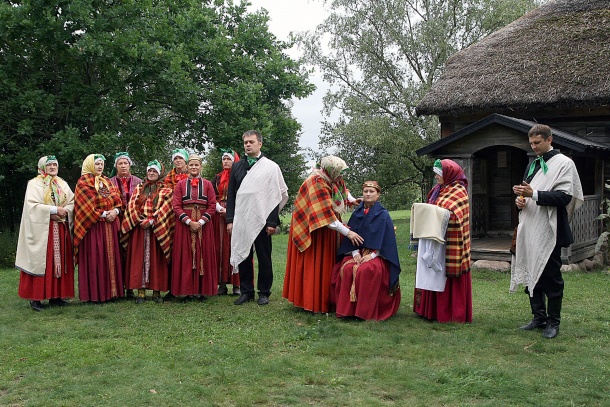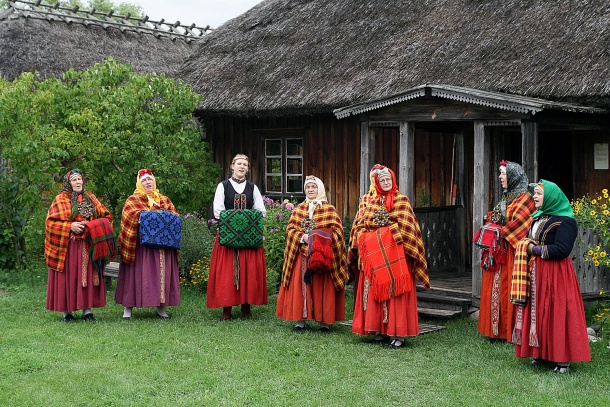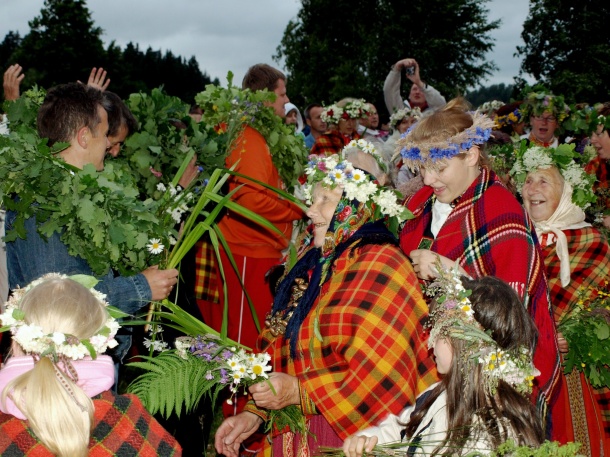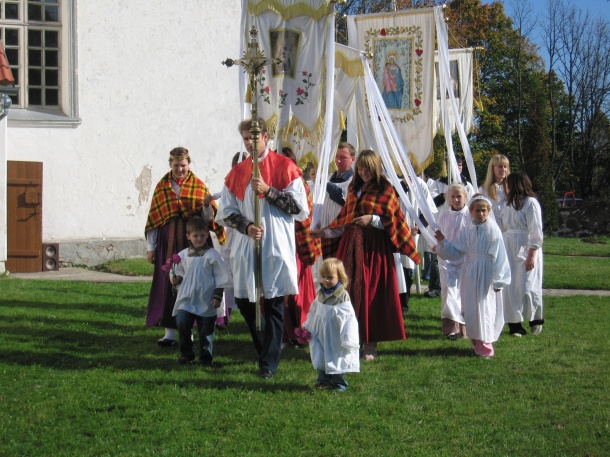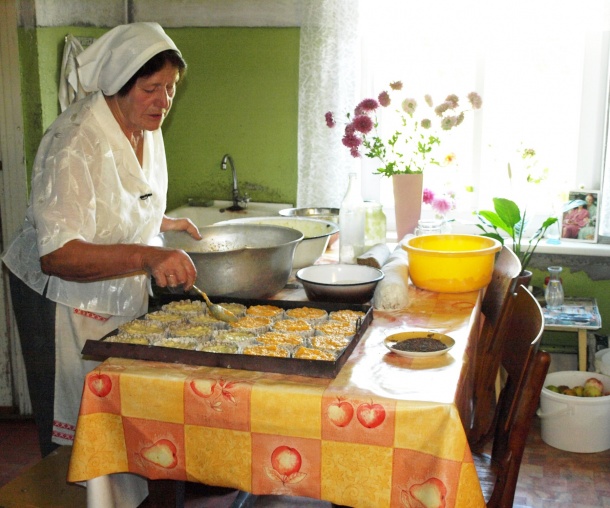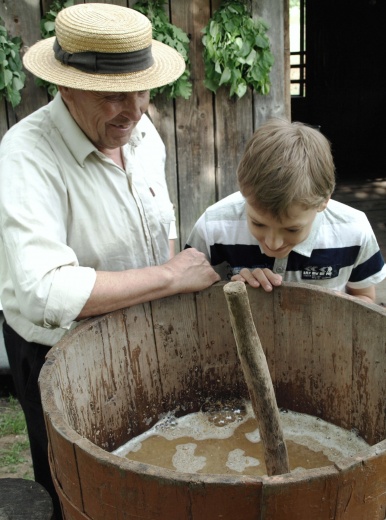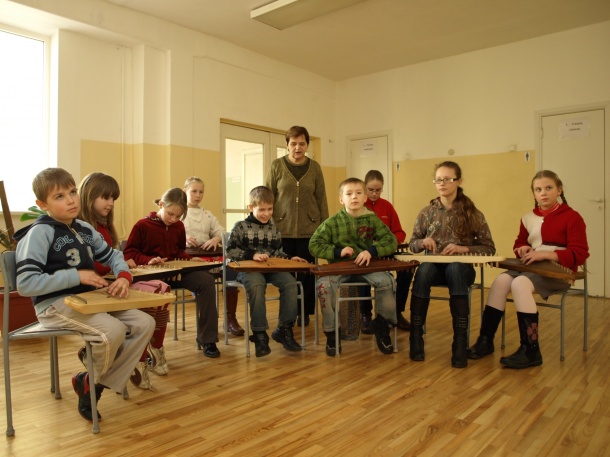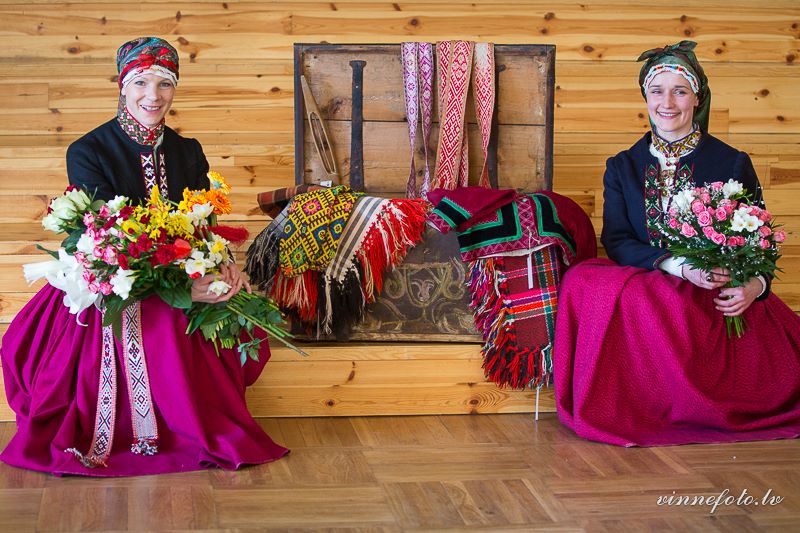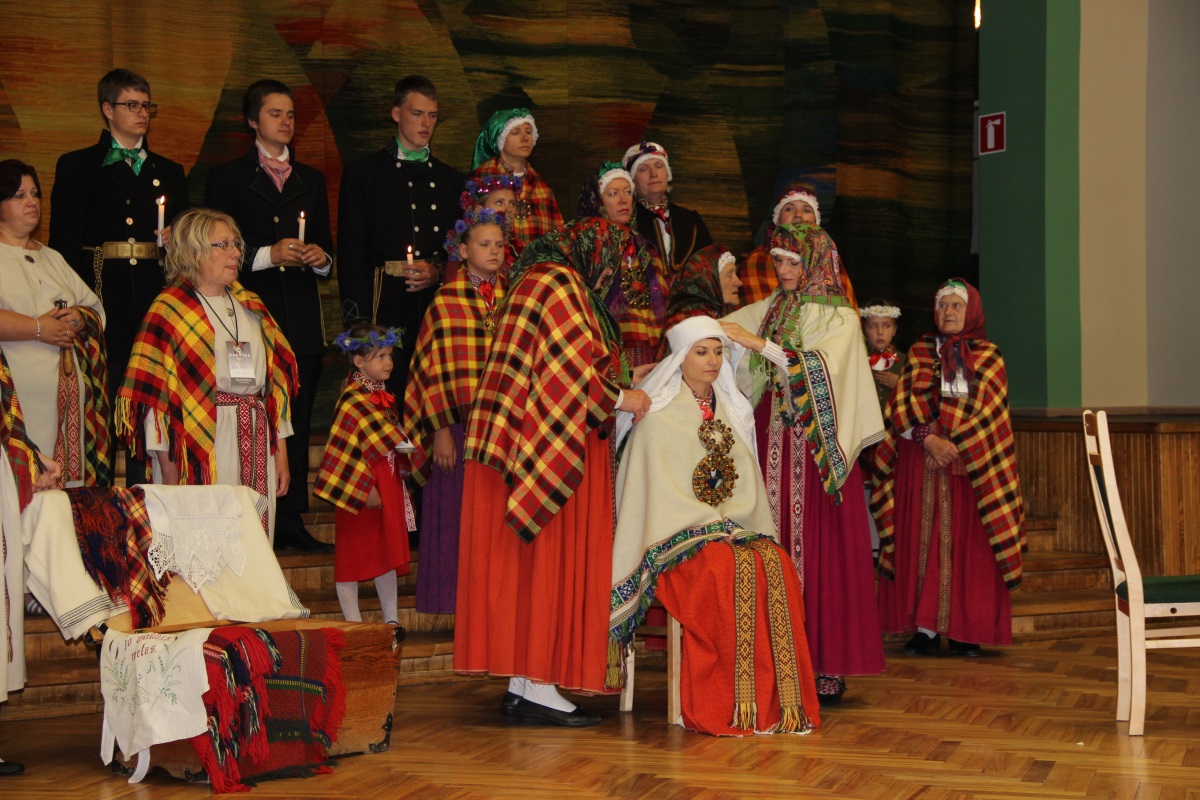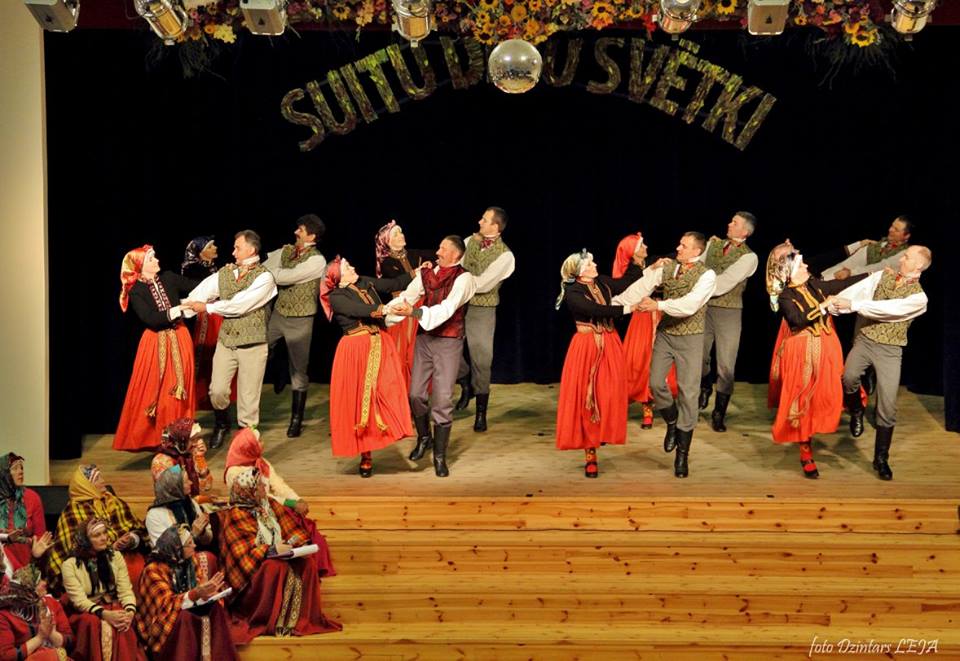The Suiti are an ethnic group who live in the western region of Kurzeme in the parishes of Alsunga, Gudenieki and Jūrkalne and surrounding areas and are renowned in Latvia for their colourful folk costumes and vocal drone – or bourdon singing (singing a continuous low-pitched note while the melody is sung at a higher pitch level) – traditionally performed by the Suiti women. The Suiti have unique wedding traditions, folk songs, dances and melodies that have over the past decades been documented and recorded and are now experiencing a renaissance, having been highlighted as a noteworthy example of local intangible cultural heritage.
The Suiti are primarily Catholics, living in an area comprising mostly Lutherans. Because of their different faith, historically, the Suiti isolated themselves from the rest of the world, allowing them to maintain and preserve their cultural traditions for centuries. For this reason, Alsunga was the last remaining region in the 20th century in Latvia where the traditional folk costume was worn daily; Suiti women only stopped wearing folk costumes after WWII.
The unique Suiti singing tradition features two (usually middle-aged or elderly) Suiti women with a strong singing voice who know by heart a large number of verses of songs. The first one usually calls out these verses (for this reason, called a saucēja – literally “a puller”), sometimes varying the melody, followed by the other one – the locītāja (literally – “the bender”) – who repeats the same words with the same melody, but in a semi-tone lower. The other women singing together with them then sing the bourdon “ēēē”, often followed by “oooo”. Although singing may sound monotonous, as the melody is repetitive, it is usually enlivened by the text, which may be humorous and witty as well as with animated gestures that singers use to make the performance more appealing. Nowadays the Suiti have established various ethnographic ensembles who perform in concerts, at various festivals and also are available to anyone who wishes to have their wedding ceremonies enriched with these traditions. The wedding ceremonies of the Suiti are a symbol of the local identity of this region.
Another unique element of Suiti culture is bagpipe playing, which has been preserved in this region of Latvia the longest. The playing of bagpipes disappeared as the choral culture developed and modern musical instruments such as the violin entered the cultural life of the local people.
The folk costumes of the Suiti region – differ from other regions with their bright orange, red and pink colours, particularly in the villaines (plaid woollen shawls) and colourful floral headscarves worn by married women as part of their folk costume. The traditional socks and mittens worn by the women of this region also feature bright patterns and are unusually vibrant in colour. Another unique part of the folk costume is a large brooch, made of silver or gold or bronze-plated – meant for securing the shawl, with red glass set in the brooch. Add to this metal belts and crowns – and the end result is a traditional folk costume that is an impressive and colourful legacy from previous generations.
The Suiti also pride themselves on their culinary heritage, which, although simple to make, is seen as unique as it provides a look into what the standard local fare was a few centuries ago. Sklandrauši are traditional tarts with pastry made of rye flour and the filling made with local root vegetables – potatoes or carrots. Sour barley and curds soup, oat jelly, blood sausage, milk soup with dumplings. All of these foods, made with locally-grown produce have been part of the regional diet for centuries have now been classified as the culinary heritage of the region.
The Suiti as a geographical region of Latvia has become well known mainly for its cultural heritage and primarily its singing traditions and vibrant folk costumes. The richness of this tradition is evidenced by the number of folksongs that have been recorded in this region – a total of 52 thousand songs and their variations. This large amount of folksongs, outlining the traditions enmeshed in the daily life of the people living in this region, together with the format of presenting this oral tradition, which is particularly showcased in wedding rituals, all contribute to making it a unique and noteworthy part of Latvia’s cultural heritage.
Daina Gross

